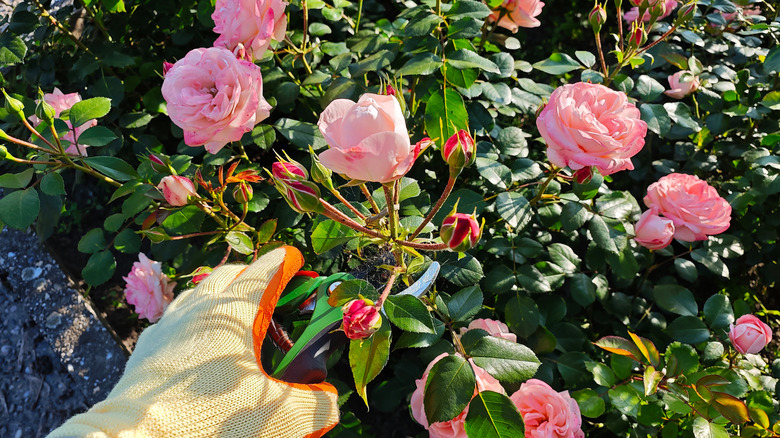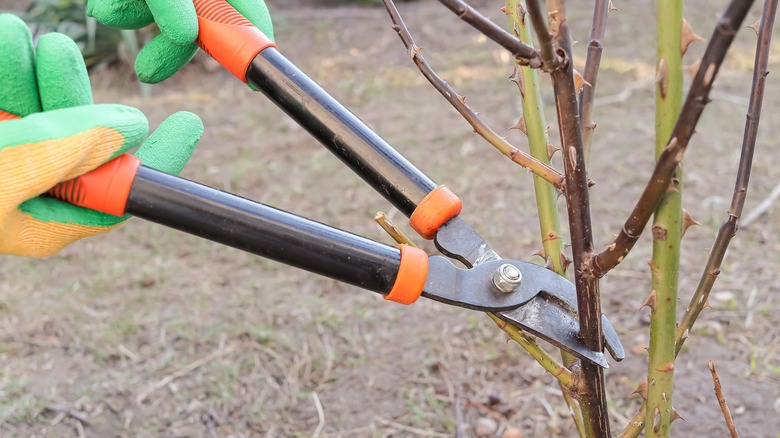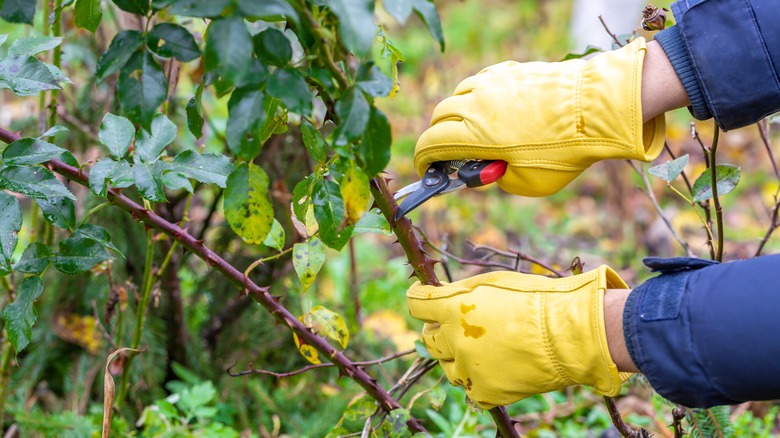Why You Should Consider Pruning Rose Bushes In The Fall
When the autumn air turns crisp and the last petals fall from the rose bushes, the question is always there: Should you get out the shears now or wait until spring? Many gardeners believe rose bushes should not be touched until late winter, because they worry about stimulating new growth that would be killed by the first frost. The truth is, giving your roses a light cut in the fall is often beneficial. Not only could it help them survive the cold winter, but it will also encourage bigger blooms next year.
The severity of the winter in your region will give you an idea how much you should prune in the fall. Gardeners who live in USDA Zone 6 and colder (where winters are long and harsh) should limit themselves to minimal trimming to avoid damage. Those who live in milder climates can perform a heavier prune to tidy up the garden and simplify shaping in the spring. This type of approach, called protective pruning, is about keeping the plant healthy rather than encouraging flowers. Focusing on the health of the plant and reducing wind exposure are two of the benefits of fall pruning. Taking care of your roses in the fall means they will be stronger when they wake up from their cold weather slumber.
Prune any signs of fungus from your roses with disinfected shears
Reducing the possibility of disease is one reason you should grab your pruning shears in the fall. As plants begin to shed, remove any fallen leaves and those that are showing signs of black spot or other fungal diseases. The spores could easily re-infect the fresh growth that emerges when the weather warms up again. All infected leaves and stems should be disposed of outside the garden; not added to you compost pile, which would allow the spores to survive.
To prune a rose bush, use sharp, disinfected tools. Be sure to remove dead, damaged, or diseased stems, cutting them back to healthy, pale green wood. Removing the dead material not only stops the spread of pathogens, but it also prevents pests from using the weak stems for overwintering. The reduction of the plant's size will also provide protection, especially for those taller roses, like hybrid teas.
Proper rose pruning in fall ensures better rose pruning in the spring
Fall trimming is a chance to shape the rose bush and prepare it for a proper rest period over the winter. To support dormancy, gardeners should stop all deadheading and fertilizing after the end of August. Since these activities signal to the plant that it should continue growing and blooming, the new growth can die off when the cold temperatures move in.
Once the growth signal is cut off, light fall pruning can focus on structure. To tidy the plant, remove any canes (stems) that are crossing, rubbing together, or growing inward toward the center. Canes that rub against each other cause injury to the plant, forming small openings in the bark that allow disease to take root. By thinning out the branches, you improve air circulation throughout the rose bush. This helps reduce humidity and the potential for fungal problems.
Pruning in the fall saves some time and effort for gardeners when the heavy shaping begins in late winter or early spring. By then, you'll have a clearer view of the plant's structure, making the larger cuts (the ones that stimulate new growth) easier to plan and execute. Lightly pruning the plant is part of preparing your roses for winter, much like adding burlap wraps in extremely cold regions.


